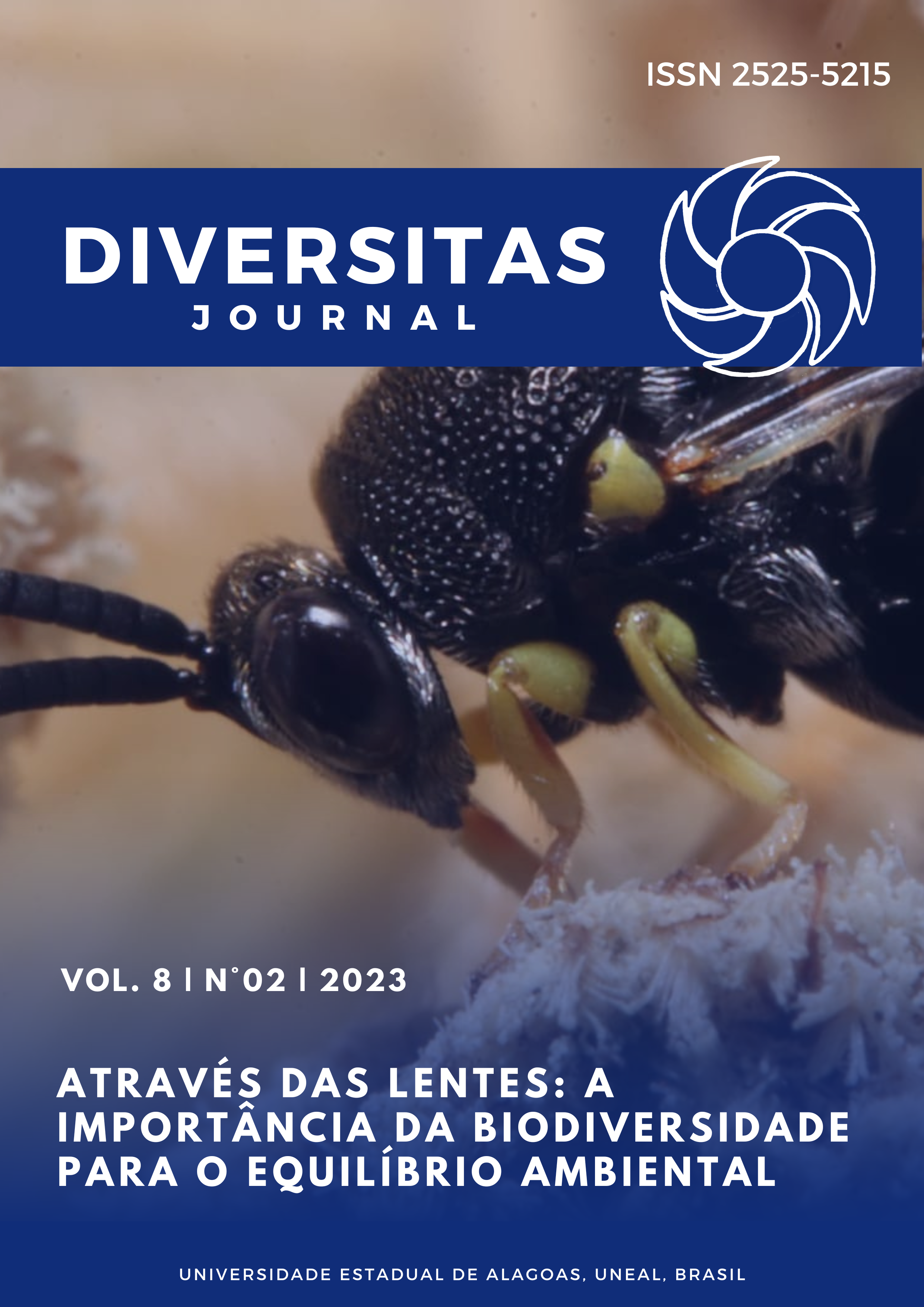PRONAF’s costing of plantation in the Brazilian Northeast region
behavior of financed products in the 2013-2021 period
DOI:
https://doi.org/10.48017/dj.v8i2.2476Keywords:
Pronaf, Agricultural public policies, Family farmingAbstract
Family farming has been gaining a new look since the 1990’s. A look that has sought to characterize it in a positive way, that is, to characterize it by what it ́s; and no longer define it in a negative way, that is, by what it ́s not, as if it were the destiny of family agriculture to become a great monocultural production. Thus, family farming began to be associated, among other factors, with food production; and has received its own rural credit policy, the Pronaf. However, there are questions about the capacity of Pronaf to meet the regional diversity of family agriculture and, above all, about the concentration of its resources in crops that reproduce the model of productive specialization associated with crops for export. In this sense, our article seeks to observe whether, for the case of the Northeast region, Pronaf has financed crops linked to local food, usually associated with diversified production. To this end, we analyzed the data of the agricultural costing credit for crops granted through Pronaf during the period from 2013 to 2021 for the Northeast region. We conclude that, although there is a diversity of crops financed by Pronaf in the Northeast, the growing participation of corn cultivation in the total resources requires attention.
Metrics
References
Aquino, J. R. De, Alves, M. O. & Vidal, M. de F. (2020). Agricultura familiar no Nordeste do Brasil: um retrato atualizado a partir dos dados do Censo Agropecuário 2017. Revista de Econômica do Nordeste, Fortaleza, v. 51, suplemento especial, p. 31-54, agosto.
Baccarin, J. G. & Oliveira, J. A. de. ( 2021). Avaliação da distribuição do Pronaf entre as regiões geográficas do Brasil. Grifos, Chapecó, v. 30, n. 51, p. 114-140, jan./abr.
Barbosa, L. C. B. G & Brandão, T. F. B. (2020). Agricultura familiar e desenvolvimento rural em Alagoas: um olhar a partir do Censo Agropecuário de 2017. Revista de Econômica do Nordeste, Fortaleza, v. 51, suplemento especial, p. 173-194, agosto.
Banco Central do Brasil. (2022). Matriz de Dados do Crédito Rural. Disponível em: https://www.bcb.gov.br/estabilidadefinanceira/micrrural. Acesso em: outubro 2021-janeiro de 2022.
Banco Central do Brasil. (2022). Manual de Crédito Rural. Disponível em: https://www3.bcb.gov.br/mcr. Acesso em: abril de 2022.
BRASIL. (1996). Decreto n° 1.946, de 28 de junho de 1996. Cria o Programa Nacional de Fortalecimento da Agricultura Familiar – PRONAF, e dá outras providências. Disponível em: https://www2.camara.leg.br/legin/fed/decret/1996/decreto-1946-28-junho-1996-435815 publicacaooriginal-1-pe.html. Acesso em: 11 abr. 2022.
BRASIL. (2006). Lei n° 11.326, de 24 de junho de 2006. Estabelece as diretrizes para a formulação da Política Nacional da Agricultura Familiar e Empreendimentos Familiares Rurais. Disponível em: http://www.planalto.gov.br/ccivil_03/_ato2004-2006/2006/lei/l11326.htm. Acesso em: 11 abr. 2022.
Bianchini, V. (2015 ). Vinte anos do PRONAF, 1995-2015: avanços e desafios. Brasília: SAF/MDA.
Organização das Nações Unidas para a Alimentação e a Agricultura/Instituto Nacional de Colonização e Reforma Agrária. (1994). Diretrizes de política agrária e desenvolvimento sustentável. Brasília, 1994. (Versão resumida do Relatório Final do Projeto UTF/BRA/036).
Grisa, C. (2017 ). A agricultura familiar nas políticas para a agricultura familiar. In: Delgado, G. C. & Bergamasco, S. M. P. P. (Org.) Agricultura familiar brasileira: desafios e perspectivas de futuro. Brasília: Ministério do Desenvolvimento Agrário (MDA), p. 292-213.
Grisa, C., Wesz Jr., V. J. & Buchweitz, V. D. (2014). Revisitando o Pronaf: velhos questionamentos, novas interpretações. Revista de Economia e Sociologia Rural, Brasília, v. 52, n. 2, p. 323-346.
Instituto Brasileiro de Geografia e Estatística. (2017). Censo Agropecuário de 2017. Rio de Janeiro: IBGE. Disponível em: https://sidra.ibge.gov.br/pesquisa/censo-agropecuario/censo-agropecuario-2017. Acesso em: 11 abr. 2022.
Picolotto, E. L. (2011). As mãos que alimentam a nação: agricultura familiar, sindicalismo e política. 289f. Tese (Doutorado) – Programa de Pós-Graduação de Ciências Sociais em Desenvolvimento, Agricultura e Sociedade da Universidade Federal Rural do Rio de Janeiro (UFRRJ), Rio de Janeiro. Disponível em: http://institucional.ufrrj.br/portalcpda/teses-doutorado-2011/. Acesso em: 04 abr. 2013.
Picolotto, E. L. (2014a). A formação de um sindicalismo de agricultores familiares no Sul do Brasil. Sociologias, Porto Alegre, v. 16, n. 35, p. 204-236, jan/abr.
Picolotto, E. L. (2014b). Os atores da construção da categoria agricultura familiar no Brasil. Revista de Economia e Sociologia Rural, Brasília, v. 52, p. 63-84.
Pretto, J. M. & Horn, C. H. (2020). Uma avaliação do PRONAF no período 1995-2018. Colóquio-Revista do Desenvolvimento Regional, v. 17, n. 1, p. 35-49.
Wanderley, M. D. N. B. (2017). "Franja Periférica", "Pobres do Campo", "Camponeses": dilemas da inclusão social dos pequenos agricultores familiares. In: Delgado, G. C. & Bergamasco, S. M. P. P. (Org.) Agricultura familiar brasileira: desafios e perspectivas de futuro. Brasília: Ministério do Desenvolvimento Agrário, p. 66-83
Wesz Jr., V. J. (2021 ). O Pronaf pós-2014: Intensificando a sua seletividade? Grifos, Chapecó, v. 30, n. 51, p. 89-113, jan./abr.
Downloads
Published
How to Cite
Issue
Section
License
Copyright (c) 2023 Ulisses Rubio Urbano da Silva, Éllen Gallerani Corrêa

This work is licensed under a Creative Commons Attribution 4.0 International License.
The Diversitas Journal expresses that the articles are the sole responsibility of the Authors, who are familiar with Brazilian and international legislation.
Articles are peer-reviewed and care should be taken to warn of the possible incidence of plagiarism. However, plagiarism is an indisputable action by the authors.
The violation of copyright is a crime, provided for in article 184 of the Brazilian Penal Code: “Art. 184 Violating copyright and related rights: Penalty - detention, from 3 (three) months to 1 (one) year, or fine. § 1 If the violation consists of total or partial reproduction, for the purpose of direct or indirect profit, by any means or process, of intellectual work, interpretation, performance or phonogram, without the express authorization of the author, the performer, the producer , as the case may be, or whoever represents them: Penalty - imprisonment, from 2 (two) to 4 (four) years, and a fine. ”


















